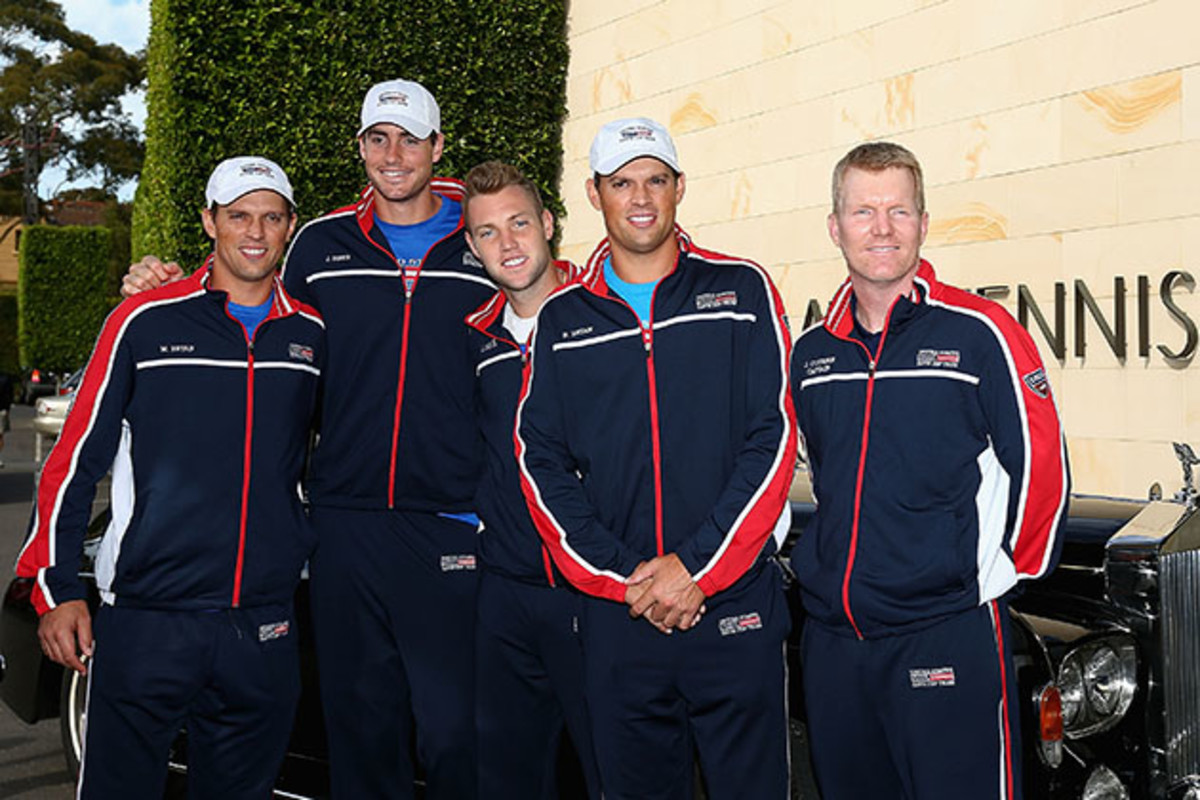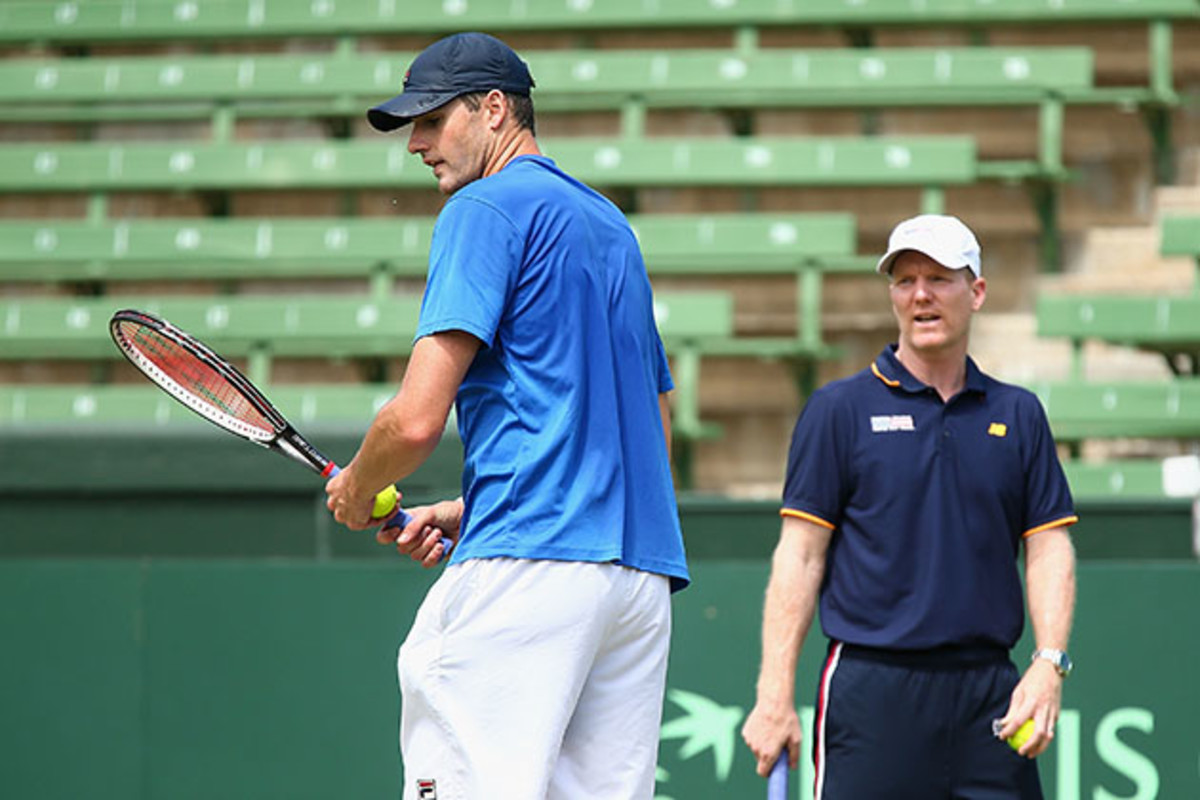Jim Courier fuels competitive desire with captaining U.S. Davis Cup team

With the exception of childbirth, says U.S. Davis Cup captain Jim Courier, there is nothing that can replicate the adrenaline of walking out onto the court with your team, wearing your country’s colors.
“Competition has been a big part of my life and this is how I do it now,” says Courier about Davis Cup. “Being able to be out there with these players in the heat of battle and use my expertise to help them get the best out of themselves gets me up.”
• Britain faces Argentina in Davis Cup semis; France advances
The last five years as captain of the U.S. Davis Cup team, which recently squandered a 2-0 lead in a 3-2 loss to Croatia in this weekend's quarterfinals in Portland, have allowed Courier, a former World No. 1 and four-time Grand Slam singles winner, to experience wins and losses with his team. But it also has allowed him the ability to create a team atmosphere in an otherwise individualized sport.
“When you get to be on a team together and spend time working for one goal as opposed to being in a locker room as an independent contractor, it is a special time and was my favorite as a player and I’m loving being a captain and watching these guys enjoy it,” he says. “It needs to be fun and they make it fun.”
But Davis Cup has more than fun. It packs pressure.

and offering advice during changeovers presents him a unique opportunity. “I think the thing I bring extra to the team is the on-court adjustments, the strategy on the court,” he says. “It is fairly easy to pick the team, for the most part, but I feel like I have been a value add with our players.”
After beating World No. 12 Marin Cilic in five sets from down two sets and down 3-0 in the fifth, Jack Sock called Courier’s help on the sideline “amazing,” especially considering some adjustments the two made to Sock’s return of serve.
To prep for the on-court play, Courier dissects the opposition, using video work to influence his preparation, and works in tandem with each of the players’ coaches. “I don’t try to take the players outside their comfort zones,” Courier says. “I will direct their attention and energy and maybe add some game plan, but if I try to get into the mix [with their routine too much] it can hurt a player. I don’t want to confuse anyone when in high pressure. They are looking for more clarity, not more cloudiness.”
While Courier admits selecting the team comes as an easier task, he knows he must keep more than just the four-person team involved throughout the year. He stays connected to a wide mix of U.S. players between the Davis Cup ties, saying the hard calls aren’t those inviting someone on the team, but letting someone know they haven’t been selected. “All of our players still want to play,” he says. “You have to stay engaged with the team.” With Steve Johnson, Sam Querrey and others right in mix, Courier says he has an entire group he can call on at any moment.

But the component that makes a Davis Cup player the best: ability to handle pressure. “It is more pressure than playing for yourself,” he says. “It is more pressure than any match other than perhaps a Grand Slam final. It is very different when they call ‘game United States.’ It is not just you and your teammates, it is also tennis fans in the U.S. invested in you that and fuel the fire. Some players cower under that pressure.”
And as Courier selects teams and builds relationships, he tries to take time to get to know players and spend time with them. “You can’t say the same things and have the same impact if you don’t hear them,” he says. “It is not just a knowledge, but how do I deliver information. A captain needs to be a chameleon. I’ve learned and I’ve made mistakes, but I’ve had successes as well.”
• Davis Cup: Argentina advances to 11th semis in 14 years
The atmosphere leading to a Davis Cup tie differs greatly from the ATP Tour, with the team spending about a week together practicing and preparing. And building chemistry helps. “I’m not saying we need to go play ultimate Frisbee, but we get together for dinners, we play cards,” Courier says. “We have good camaraderie and chemistry.”

Beyond the Baseline: SI's tennis podcast
Sports Illustrated Podcast Network



Sure, the card playing—often a form of high-low or poker—can get a bit “heated,” but that is a way for the players to bond and get to know each other, building relationships with each other that last beyond Davis Cup. Whether its Courier serving as a mentor to players—“some lean on me with schedule and coaching changes and I view myself as a resource if they want”—or veteran, such as John Isner, building meaningful bonds with younger players, the team atmosphere does wonders to foster relationships.
With Davis Cup now over for the U.S. after the three straight losses in Portland ended the team’s chance at hosting France in the semifinals, Courier will need that childbirth-like adrenaline to kick in a little more in 2017.
Tim Newcomb covers sports aesthetics—stadiums to sneakers—and training for Sports Illustrated. Follow him on Twitter at @tdnewcomb.
